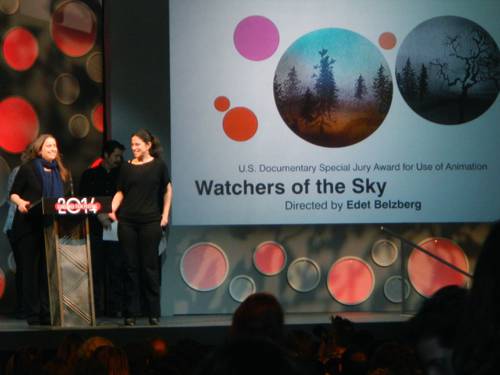
FAQ About The Impact of Animated Documentaries in Storytelling

What is an animated documentary?
An animated documentary is a film genre that combines elements of animation and documentary filmmaking. It uses animated graphics and imagery to depict real-life events, stories, or concepts instead of relying solely on live-action footage. This approach enables filmmakers to portray abstract ideas, recreate events where footage is unavailable, and offer fresh perspectives on the stories being told.

How does animation enhance storytelling in documentaries?
Animation enhances storytelling in documentaries by providing visual expression to ideas and events that are difficult to capture with live footage. It allows filmmakers to depict abstract concepts, historical narratives, and imaginative sequences that enrich the factual content. Animation also enables creative interventions in storytelling, giving filmmakers the ability to manipulate time, space, and perspective to craft a more engaging narrative.

Why choose animation over live action in documentaries?
Filmmakers might choose animation over live action in documentaries for several reasons, including the ability to depict events without available footage, illustrate abstract or complex themes visually, and engage viewers with artistic expression. Animation can bring a unique and immersive aesthetic experience that complements and enhances the factual narrative, making it more appealing and accessible to diverse audiences.

Are animated documentaries considered factual?
Animated documentaries are indeed considered factual; however, they use animation to depict real events, concepts, and narratives in a creative way. The incorporation of animation does not diminish the factual foundation of the documentary. Instead, it serves to expand the storytelling possibilities, enabling nuanced demonstrations of truth through visualization and artistic interpretation.

What are some famous animated documentaries?
Some well-known animated documentaries include Waltz with Bashir, which explores the Israeli-Lebanon conflict, The Missing Picture focused on the Khmer Rouge regime in Cambodia, and Tower, which recounts the Texas Tower shooting. These films are acclaimed for their innovative use of animation to represent historical events and personal stories, offering new perspectives and engaging audiences.

How does animation influence the perception of reality in documentaries?
Animation can influence the perception of reality in documentaries by offering a stylized interpretation of events or stories, which might challenge viewers' traditional expectations of documentaries as purely factual. However, this artistic approach can enhance understanding and empathy by effectively illustrating emotions, memories, and concepts that resonate with audiences, making abstract or complex realities more tangible.

What are the advantages of using animation in storytelling within documentaries?
The advantages of using animation in documentary storytelling include the ability to visualize events without existing footage, illustrate complex or abstract ideas, and infuse emotional depth and creativity into the narrative. Animation offers flexibility in how stories are told, allowing filmmakers to transcend traditional storytelling limits, capture attention, and engage audiences on multiple levels.

What challenges do filmmakers face when creating animated documentaries?
Challenges faced by filmmakers in creating animated documentaries include balancing factual accuracy with artistic interpretation, managing the costs and time involved in animation production, and ensuring the animated elements effectively contribute to the story. It's crucial to maintain credibility while using animation to enhance storytelling and to ensure the visual elements resonate with audiences.

Can animation in documentaries alter historical narratives?
While animation can enrich historical narratives by providing a creative and immersive portrayal, it does not inherently alter factual events. Instead, it can offer alternate perspectives or deepen the viewers' understanding and emotional engagement. Careful consideration and responsibility are essential to ensure that animation supports rather than distorts historical accuracy.

How do audiences generally perceive animated documentaries?
Audiences generally perceive animated documentaries positively, appreciating their creative approach to storytelling and the unique visual experience they offer. They tend to enjoy the blend of factual narrative with artistic expression, finding it engaging and insightful. However, perceptions may vary based on personal preferences and expectations of documentary realism versus artistic interpretation.

What techniques are commonly used in animated documentaries?
Common techniques in animated documentaries include rotoscoping, stop-motion, CGI, and traditional 2D animation. These techniques allow filmmakers to recreate events, visualize abstract ideas, and craft a unique aesthetic that complements the documentary's factual content. Each technique brings distinct visual styles and storytelling possibilities, contributing to the overall impact of the narrative.

How do animated documentaries challenge traditional documentary formats?
Animated documentaries challenge traditional formats by incorporating artistic elements that expand narrative possibilities beyond live-action constraints. This genre invites viewers to experience stories through imaginative visuals, bridging gaps in footage and offering emotional and conceptual depth. By doing so, it redefines audience expectations and broadens the scope of documentary storytelling.

Can animated documentaries be educational?
Yes, animated documentaries can be educational by engaging audiences with compelling visual storytelling that conveys factual information, explains complex concepts, and illuminates historical events. Animation can make learning more engaging and accessible, particularly for abstract subjects, children, or audiences unfamiliar with a topic.

How do filmmakers ensure credibility in animated documentaries?
Filmmakers ensure credibility in animated documentaries by conducting thorough research and maintaining a strong factual foundation, despite the use of animated elements. They often consult experts, use archival material, and transparently communicate the blend of facts with animated interpretations. The aim is to present an accurate narrative with visual innovation, while respecting the truth underpinning the documentary.

Do animated documentaries appeal to different demographics compared to traditional documentaries?
Animated documentaries often appeal to a broader demographic, thanks to their creative visual style and engaging storytelling. They tend to attract younger audiences, individuals interested in animation, and those seeking unique documentary experiences. However, traditional documentaries may appeal more to viewers preferring straightforward factual storytelling. Both formats offer value, catering to different tastes and interests.

Can animated documentaries tackle serious subjects effectively?
Animated documentaries can effectively tackle serious subjects by employing visual storytelling to articulate complex issues, emotions, and narratives. Animation allows for nuanced representation of difficult topics, helping audiences develop deeper understanding and empathy. This approach can make serious content more accessible and impactful, offering perspectives that might be challenging to convey through live-action means alone.

What is the future of animated documentaries in storytelling?
The future of animated documentaries in storytelling looks promising, as technological advances continue to expand creative possibilities. This genre is poised to address diverse stories, offer new narrative techniques, and engage wider audiences. As filmmakers increasingly explore animation's potential to enrich factual storytelling, animated documentaries are likely to gain recognition and appreciation as a legitimate and impactful form.

How do animated documentaries impact audience engagement?
Animated documentaries impact audience engagement by offering visually captivating and emotionally resonant experiences that draw viewers in. The blend of animation with factual storytelling captures attention and enhances memorability, often making complex or abstract content more relatable. This inventive approach caters to various learning styles and increases the documentary's appeal across different viewer segments.

Are there any festivals or awards celebrating animated documentaries?
Yes, there are festivals and awards that celebrate animated documentaries, recognizing their creative achievements and contributions to storytelling. Events like the Annecy International Animated Film Festival often showcase animated documentaries, while awards such as the Academy Award for Best Documentary Feature also consider animated works. These recognitions help elevate the genre's profile and encourage innovation in documentary filmmaking.
